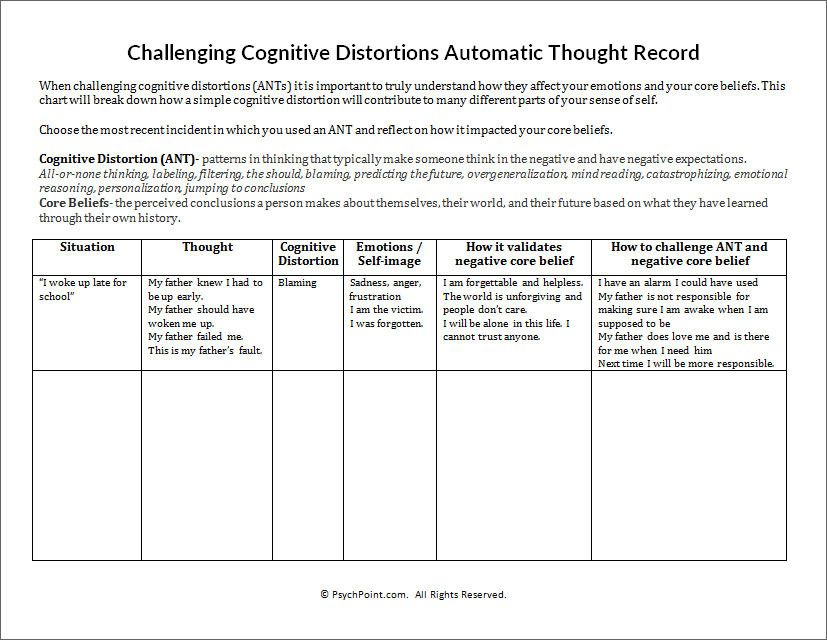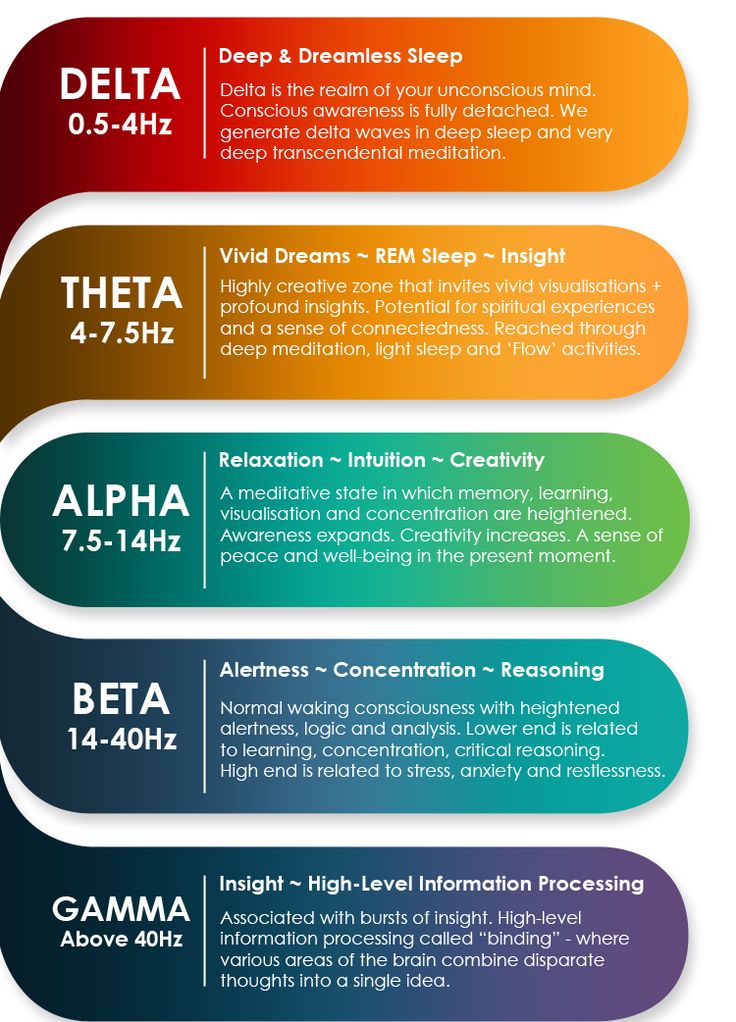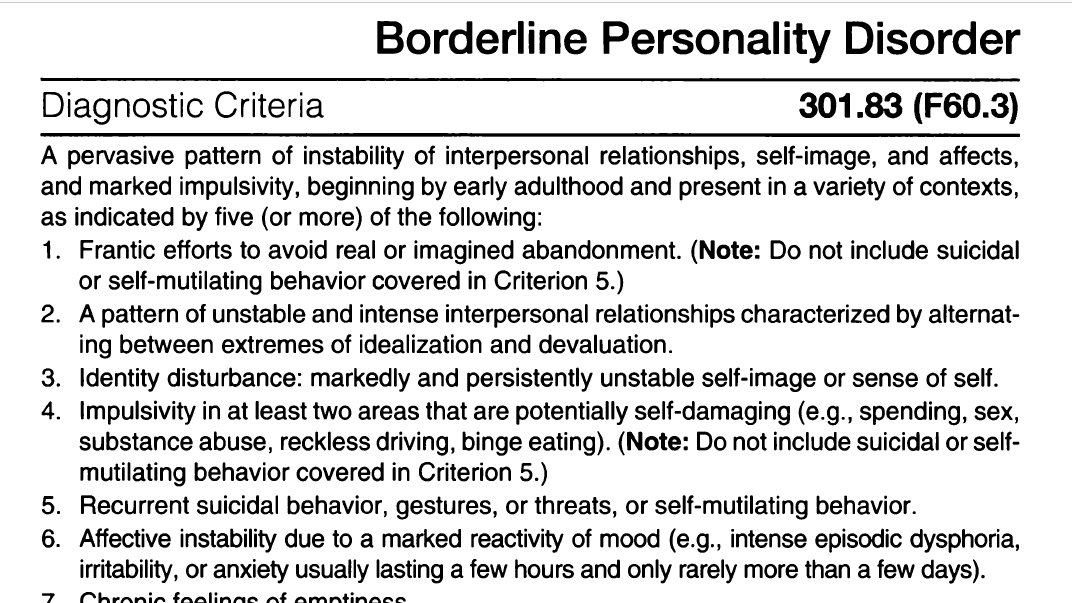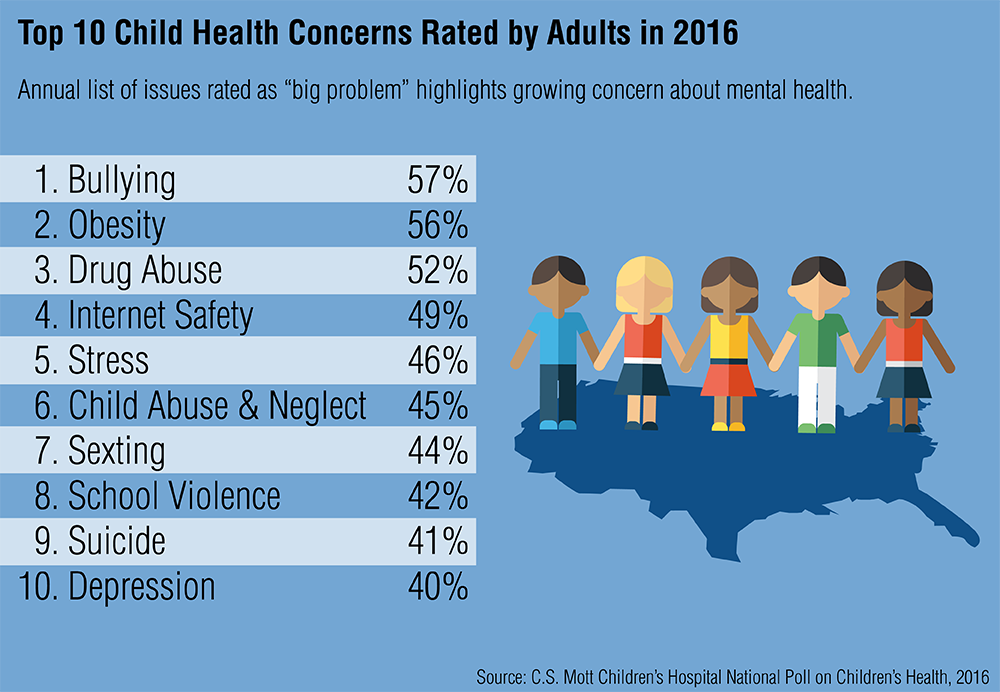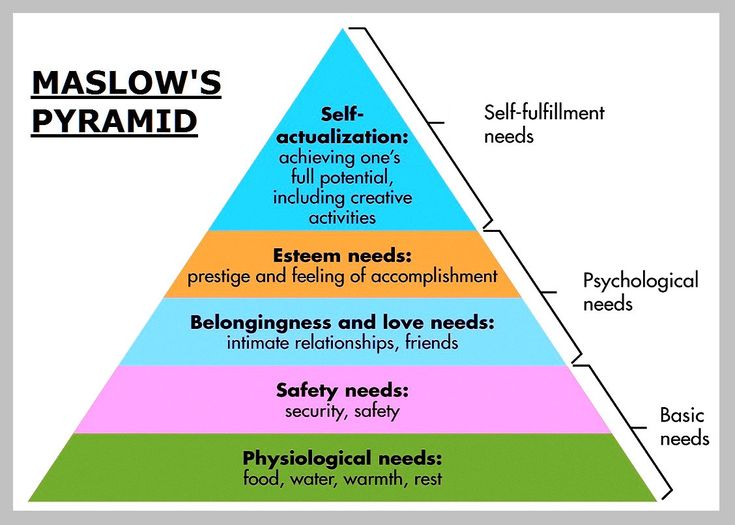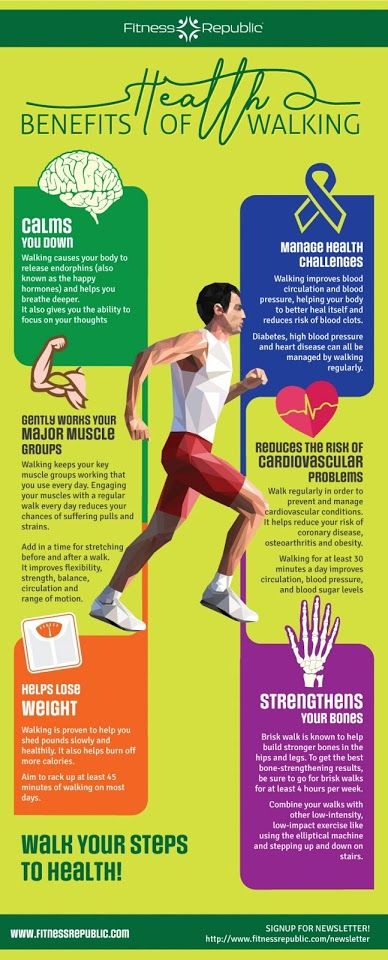50 common cognitive distortions
50 Common Cognitive Distortions | Psychology Today
Becoming mindful of these common cognitive distortions will help you understand yourself (and other people) better and improve your decision-making.
1. Personalizing
Taking something personally that may not be personal. Seeing events as consequences of your actions when there are other possibilities. For example, believing someone’s brusque tone must be because they’re irritated with you.
2. Mindreading
Guessing what someone else is thinking, when they may not be thinking that.
3. Negative predictions
Overestimating the likelihood that an action will have a negative outcome.
4. Underestimating coping ability
Underestimating your ability to cope with negative events.
5. Catastrophizing
Thinking of unpleasant events as catastrophes.
6. Biased attention toward signs of social rejection, and lack of attention to signs of social acceptance
For example, during social interactions, paying attention to someone yawning and assuming you're boring them—but not paying the same degree of attention to other cues that suggest they are interested in what you’re saying (such as leaning toward you).
7. Negatively biased recall of social encounters
Remembering negatives from a social situation while not remembering positives. For example, remembering losing your place for a few seconds while giving a talk but not remembering the huge clap you got at the end.
8. Thinking an absence of effusiveness means something is wrong
Believing an absence of a smiley face in an email means someone is mad at you. Or, interpreting “You did a good job” as negative because you were expecting to be told that you did a "great" job.
9. Unrelenting standards
The belief that achieving unrelentingly high standards is necessary to avoid a catastrophe. For example, the belief that making any mistakes will lead to your colleagues thinking you're useless.
10. Entitlement beliefs
Believing the same rules that apply to others should not apply to you. For example, believing you shouldn’t need to do an internship even if that is the normal path to employment in your industry.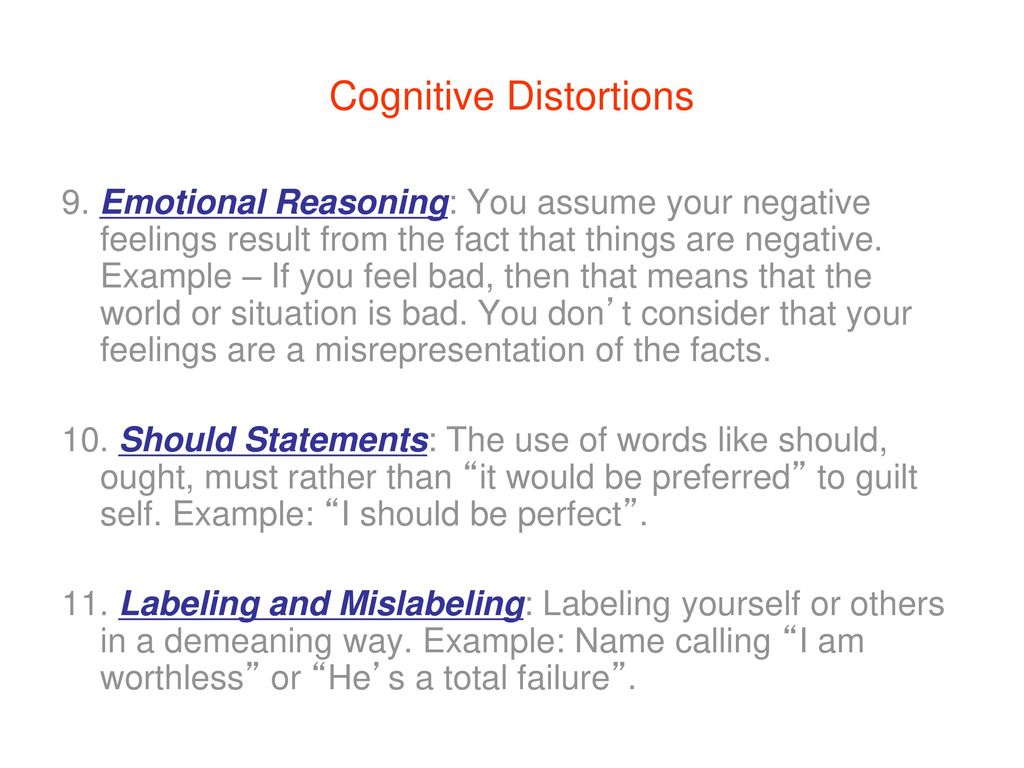
11. Justification and moral licensing
For example, when you've made progress toward a goal and therefore feel that it’s ok to act in a way that is inconsistent with it.
12. Belief in a just world
For example, believing that poor people must deserve to be poor.
13. Seeing a situation only from your own perspective
For example, failing to look at a topic of relationship tension from your partner’s perspective.
14. Belief that self-criticism is an effective way to motivate yourself toward better future behavior
It’s not.
15. Recognizing feelings as causes of behavior, but not equally attending to how behavior influences thoughts and feelings
For example, you think, “When I have more energy, I’ll exercise” but not, “Exercising will give me more energy.”
16. All-or-nothing thinking
For example: "If I don’t always get 'A's, I’m a complete failure.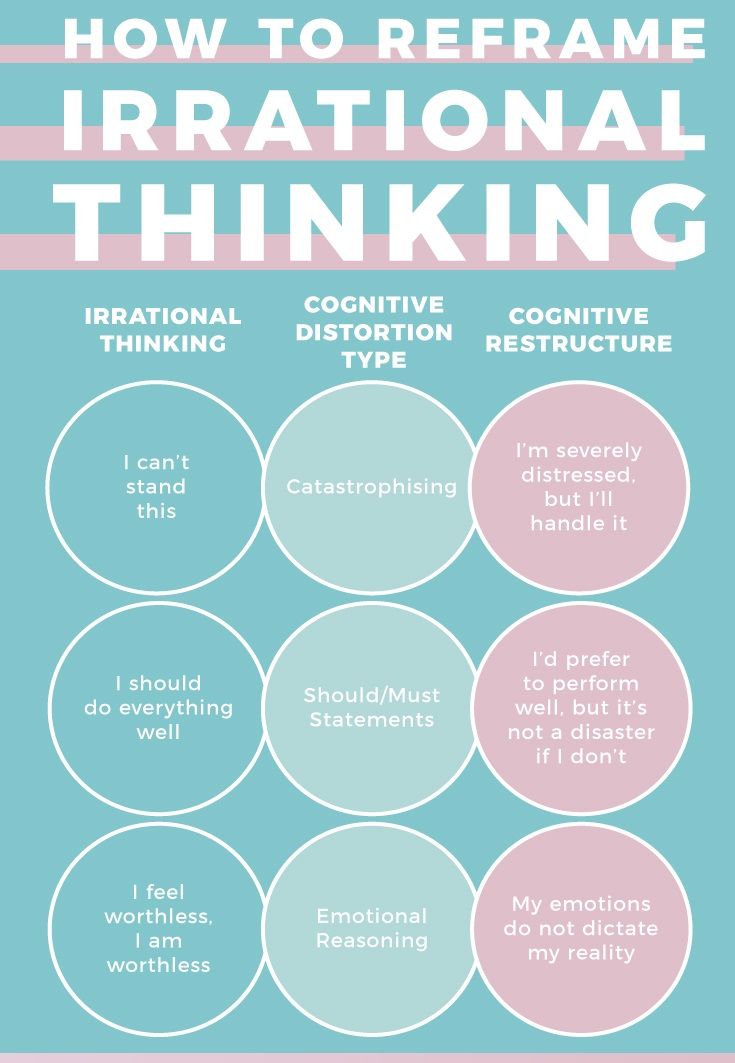 "
"
17. Shoulds and musts
For example, "I should always give 100 percent." Sometimes, there are no important benefits of doing a task beyond a basic acceptable level.
18. Using feelings as the basis of a judgment, when the objective evidence does not support your feelings
For example: "I don’t feel clean, even though I’ve washed my hands three times. Therefore, I should wash my again." (This is an example that may be indicative of obsessive-compulsive disorder.)
19. Basing future decisions on “sunk costs”
For example, investing more money in a business that is losing money because you’ve invested so much already.
20. Delusions
Holding a fixed, false belief, despite overwhelming evidence to the contrary. For example, believing global warming doesn’t exist. Or, believing you’re overweight when you’re 100 pounds.
21. Assuming your current feelings will stay the same in the future
For example, “I feel unable to cope today; therefore, I will feel unable to cope tomorrow.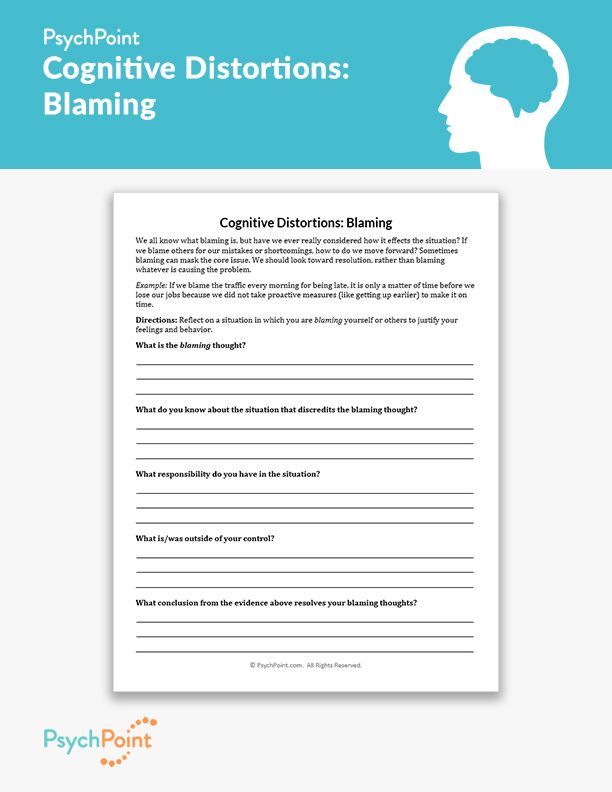 ”
”
22. Cognitive labeling
For example, mentally labeling your sister’s boyfriend as a “loser” and not being open to subsequent evidence suggesting he isn’t a loser.
23. The Halo Effect
For example, perceiving high calories foods as lower in calories if they’re accompanied by a salad.
24. Minimizing
For example, “Yes, I won an important award—but that still doesn’t really mean I’m accomplished in my field.”
25. Magnifying (aka cognitively exaggerating)
For example, blowing your own mistakes and flaws out of proportion and perceiving them as more significant than they are. Magnifying is making a mountain out of a molehill, but not quite to the same extent as catastrophizing.
26. Cognitive conformity
Seeing things the way people around you view them. Research has shown that this often happens at an unconscious level. To learn more, see the Asch experiment.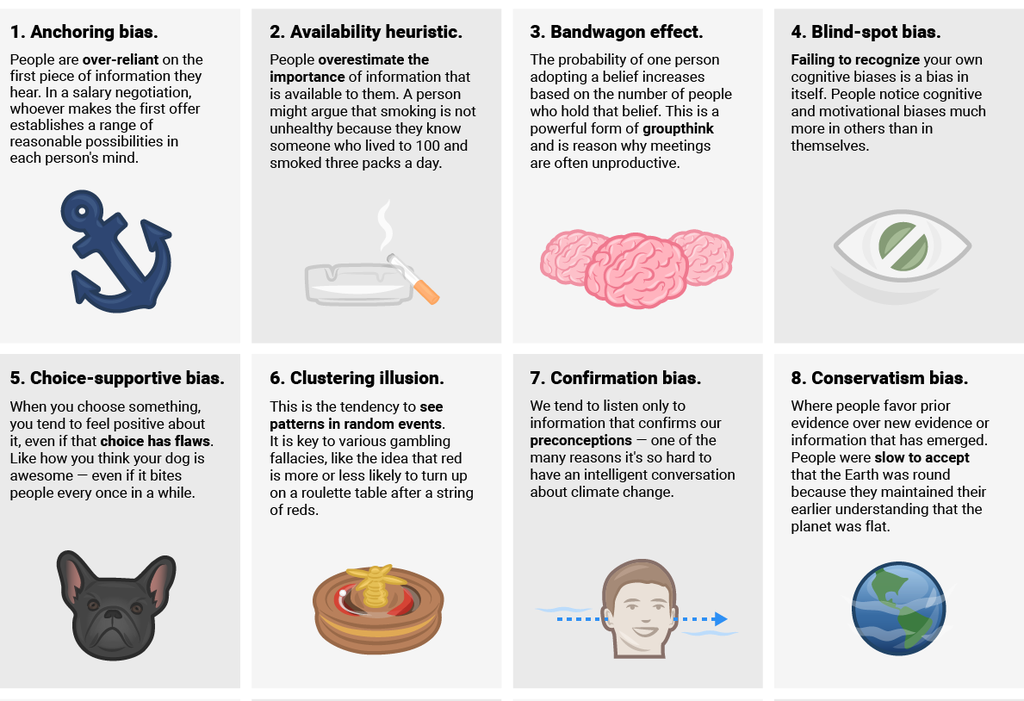
27. Overgeneralizing
Generalizing a belief that may have validity in some situations (such as, “If you want something done well, you should do it yourself”) to every situation. This is a type of lack of psychological flexibility.
28. Blaming others
29. Falling victim to the “foot in the door” technique
When someone makes a small request to get a “Yes” answer, then follows up with a bigger request, people are more likely to agree to the big request than if only that request had been made.
30. Falling victim to the “door in the face” technique
When someone makes an outlandish request first, then makes a smaller request, the initial outlandish request makes the smaller request seem more reasonable.
31. Focusing on the amount saved rather than the amount spent
For example, focusing on the amount of a discount rather than on whether you’d buy the item that day at the sale price if it wasn’t listed as on sale.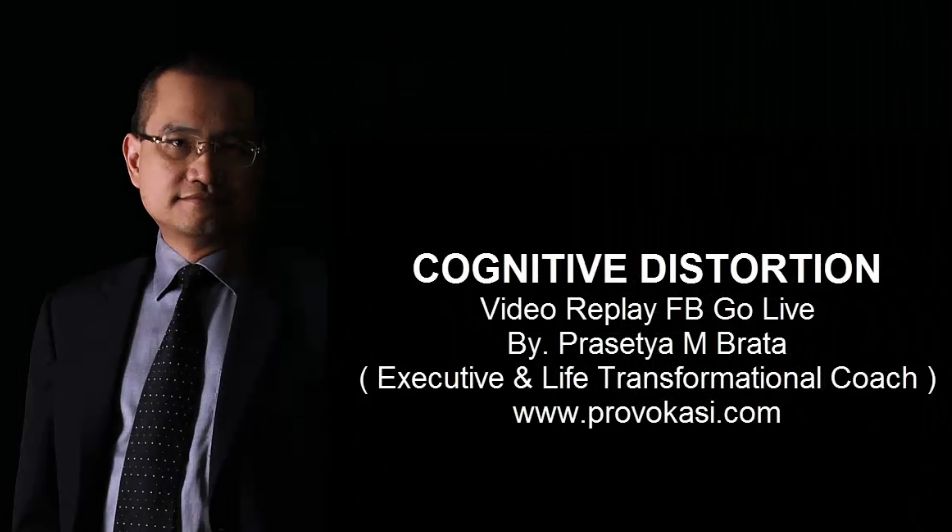
32. Overvaluing things because they're yours
For instance, perceiving your baby as more attractive or smart than they really are because they're yours, or overestimating the price of your home when you put it on the market because you overestimate the added value of renovations you've made.
33. Failure to consider alternative explanations
Coming up with one explanation for why something has happened and failing to consider alternative, more likely explanations.
34. The self-serving bias
The self-serving bias is people's tendency to attribute positive events to their own character but attribute negative events to external factors.
35. Attributing strangers' behavior to their character and not considering situational/contextual factors
36. Failure to consider opportunity cost
For example, spending an hour doing a low ROI task and thinking, "It's only an hour" and not considering the lost potential of spending that hour doing a high ROI task.
37. Assumed similarity
The tendency to assume other people hold similar attitudes to your own.
38. In-group bias
The tendency to trust and value people who are like you, or who are in your circle, more than people from different backgrounds.
39. "You don't know what you don't know"
Getting external feedback can help you become aware of things you didn't even know that you didn't know!
40. The tendency to underestimate how long tasks will take
41. The belief that worry and overthinking will lead to problem-solving insights
In fact, overthinking tends to impair problem-solving ability and can lead to avoidance coping.
42. Biased implicit attitudes
Psychologists use a test called the implicit association test to measure attitudes that people subconsciously hold. Results show that people subconsciously associate "fat" with "lazy," for instance.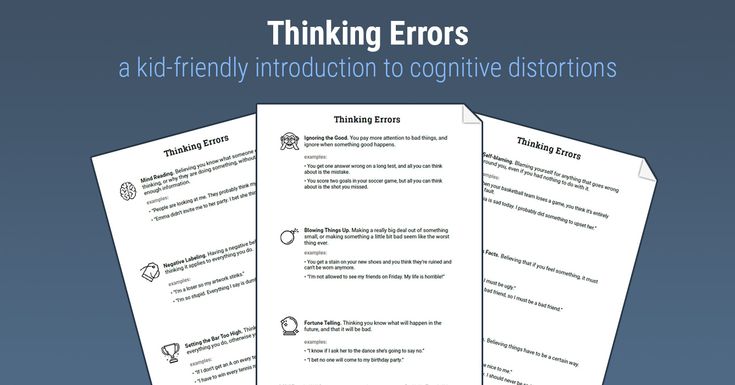
It's useful to be mindful that you may subconsciously hold biased attitudes; then, you can consciously correct for them.
43. The peak-end rule
The tendency to most strongly remember
- how you felt at the end of an experience
- how you felt at the moment of peak emotional intensity during the experience.
Biased memories can lead to biased future decision making.
44. The tendency to prefer familiar things
Familiarity breeds liking, which is part of why people are loyal to certain brands and may pay inflated prices for them instead of switching.
45. The belief you can multi-task
When you're "multi-tasking," you're actually task- (and attention-) shifting. Trying to focus on more than one goal at a time is self-sabotage.
46. Failure to recognize the cognitive benefits of restorative activitIes and those that increase positive emotions
For example, seeing humor or breaks as a "waste of time.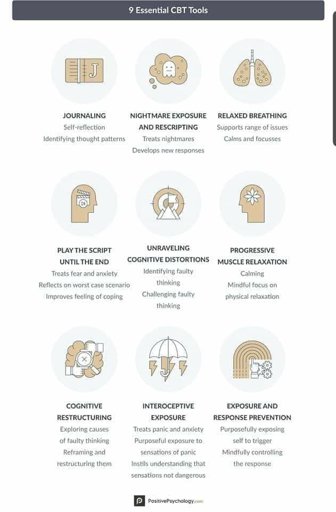 "
"
47. Positively biased predictions
For example, expecting that if you sign up for a one-year gym membership, you will go—even though this hasn't been the case in the past.
48. Cheating on your goals based on positive behaviors you plan to do later
For example, overeating today if you expect you'll be starting a diet next week. Often, the planned positive behaviors don't happen.
49. Repeating the same behavior and expecting different results (or thinking that doubling down on a failed strategy will start to produce positive results)
For example, expecting that if you nag more, your partner will change.
50. "I can't change my behavior" (or "I can't change my thinking style")
Instead of telling yourself "I can't," try asking yourself how you could shift your behavior (or thinking style) by just five percent.
How Can You Become Mindful of Your Cognitive Distortions?
Try printing this post and highlighting the cognitive distortions you think apply to you. I suggest you then pick one cognitive distortion at a time and keep a running list for a week of how that cognitive distortion manifests in your life.
I suggest you then pick one cognitive distortion at a time and keep a running list for a week of how that cognitive distortion manifests in your life.
A giant list of ubiquitous cognitive distortions – Blogging on Business
Becoming mindful of the common cognitive distortions will help you understand yourself and other people better, and improve your decision making. Here is an excerpt from an article by Alice Boyes for Psychology Today. To read the complete article, check out others, and obtain subscription information, please click here.
Illustrations Credit
Here are the first ten of the 50 that Boyes briefly discusses in the article.
1. Personalizing.
Taking something personally that may not be personal. Seeing events as consequences of your actions when there are other possibilities. For example, believing someone’s brusque tone must be because they’re irritated with you. (Tips for not personalizing.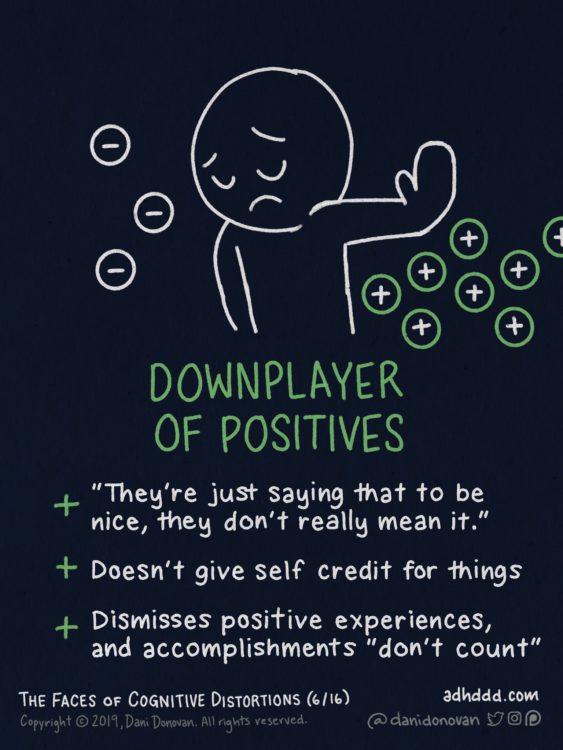 )
)
2. Mindreading.
Guessing what someone else is thinking, when they may not be thinking that. [This is one of the more common forms of the “unknown unknown” challenge.]
3. Negative predictions.
Overestimating the likelihood that an action will have a negative outcome. [More information about all this in her book.]
4. Underestimating coping ability.
Underestimating your ability cope with negative events.
5. Catastrophizing.
Thinking of unpleasant events as catastrophes.
6. Biased attention toward signs of social rejection, and lack of attention to signs of social acceptance.
For example, during social interactions, paying attention to someone yawning but not paying the same degree of attention to other cues that suggest they are interested in what you’re saying (such as them leaning in).
7. Negatively biased recall of social encounters.
Remembering negatives from a social situation and not remembering positives. For example, remembering losing your place for a few seconds while giving a talk but not remembering the huge clap you got at the end.
8. Thinking an absence of effusiveness means something is wrong.
Believing an absence of a smiley-face in an email means someone is mad at you. Or, interpreting “You did a good job” as negative if you were expecting “You did a great job.”
9. Unrelenting standards.
The belief that achieving unrelentingly high standards is necessary to avoid a catastrophe. For example, the belief that making any mistakes will lead to your colleagues thinking you’re useless.
10. Entitlement beliefs.
Believing the same rules that apply to others should not apply to you. For example, believing you shouldn’t need to do an internship even if that is the normal path to employment in your industry.
* * *
Here is a direct link to the complete article.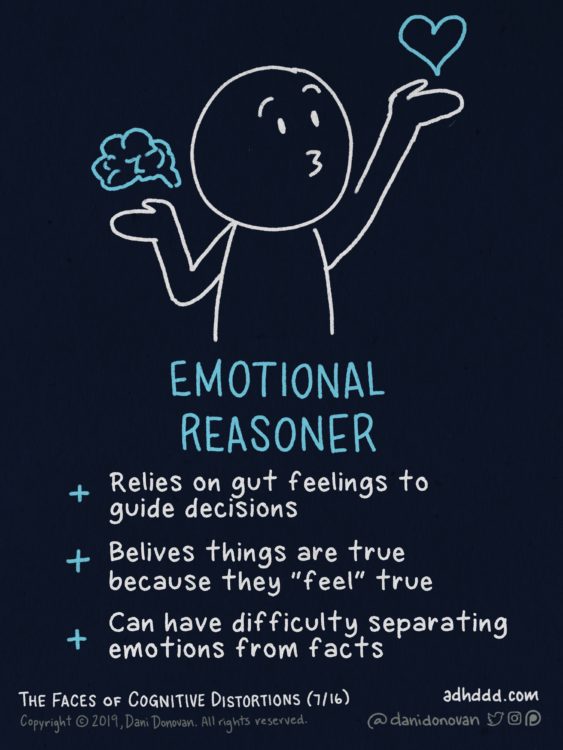
Alice Boyes, Ph.D. has had her research about couples published in leading international journals, including Journal of Personality and Social Psychology. Her work focuses on how people can use tips from social, clinical and positive psychology research in their everyday lives and romantic relationships. She is regularly interviewed for magazines and radio about a wide range of social, clinical, positive, and relationships psychology topics. She can be contacted for media interviews by emailing [email protected]. Her book, The Anxiety Toolkit: Strategies for Fine-Tuning Your Mind and Moving Past Your Stuck Points, was published by TarcherPerigee (March 3, 2015).
Like this:
Like Loading...
5 common cognitive distortions that prevent us from living
May 3, 2017Life
Happiness depends on how we think. Thinking errors cause us to see life in a negative way, but they can be recognized and avoided.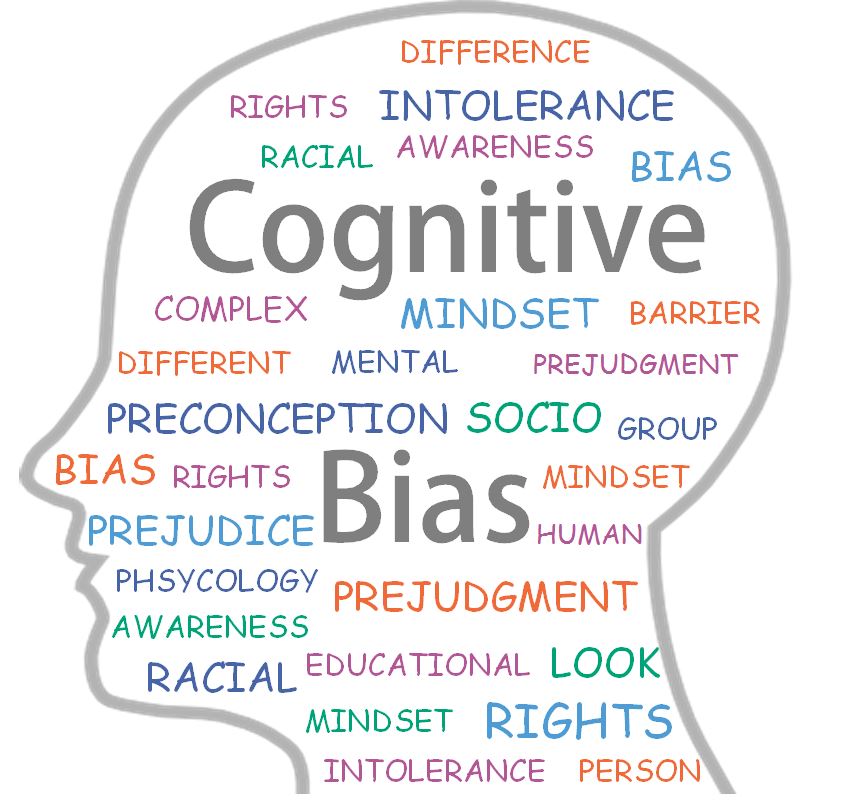
Share
0John Kim
Coach, motivational speaker, co-founder of SHFT.
What is Cognitive Bias
Cognitive Bias is the mind's way of convincing us of something that is not entirely true. That is, it is not a lie, but a half-truth.
Such inaccurate thoughts reinforce negative thinking and emotions. We seem to be saying rational things to ourselves, but in fact their only purpose is to keep us feeling bad.
Below are five of the most common thinking errors. After learning about each of them, ask yourself two questions:
- Have you noticed such a cognitive distortion in yourself?
- And if so, when?
Common cognitive distortions
1. Filtering
The essence of this error is that only the negative aspects of the situation are taken into account. The positive ones just don't count. In this scenario, a person can get hung up on one negative moment, which is why his whole life is painted in dull colors.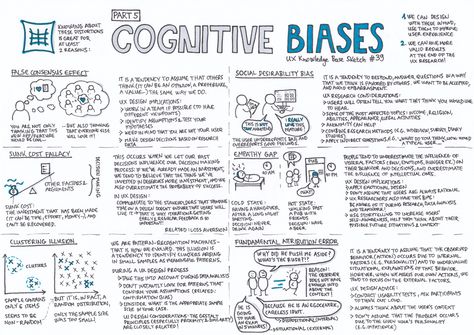
2. Black and white thinking
Polarized or black and white thinking is that a person thinks in extremes. He's either perfect or a complete failure. There is no third.
If he does not perform a task perfectly, he perceives it as a complete failure. A similar cognitive error is activated when playing sports and in business.
3. Overgeneralization
In this cognitive bias, a person comes to a general conclusion based on just one incident or one piece of evidence. If something bad happens once, he expects it to happen again. One unpleasant incident is perceived as part of an endless chain of failures.
This type of thinking is often included in romantic relationships. For example, when, after one failed date, a person decides that he will remain alone forever.
4. Jumping to conclusions
This thinking error consists in jumping to conclusions without collecting enough evidence.
Thus, he can “understand” the attitude of another towards himself in advance, without bothering to ask this other about his own opinion. This situation often arises in interpersonal relationships and friendships.
This situation often arises in interpersonal relationships and friendships.
The same applies to work and new projects. A person can convince himself of the failure of a new enterprise, even without starting it.
5. Catastrophization
This cognitive distortion makes a person feel that a catastrophe is coming for no reason. He constantly asks himself questions like “what if”. What if tragedy strikes? What if this happens to me? What if I go hungry? What if I die?
When life is made up of such obsessive expectations, there can be no question of any happiness.
This error is also associated with a distorted perception of the scale of events. In this case, a minor negative incident, such as one's own mistake, is seen as a global tragedy. And the magnitude of positive important events is only underestimated.
If you find yourself with any of these cognitive distortions, ask yourself three questions:
- What is wrong with this thought pattern in your life?
- How does it change your behavior?
- What role does all this play in your daily life?
Perhaps the awareness of the harm of thinking habits will be the impetus to say goodbye to them.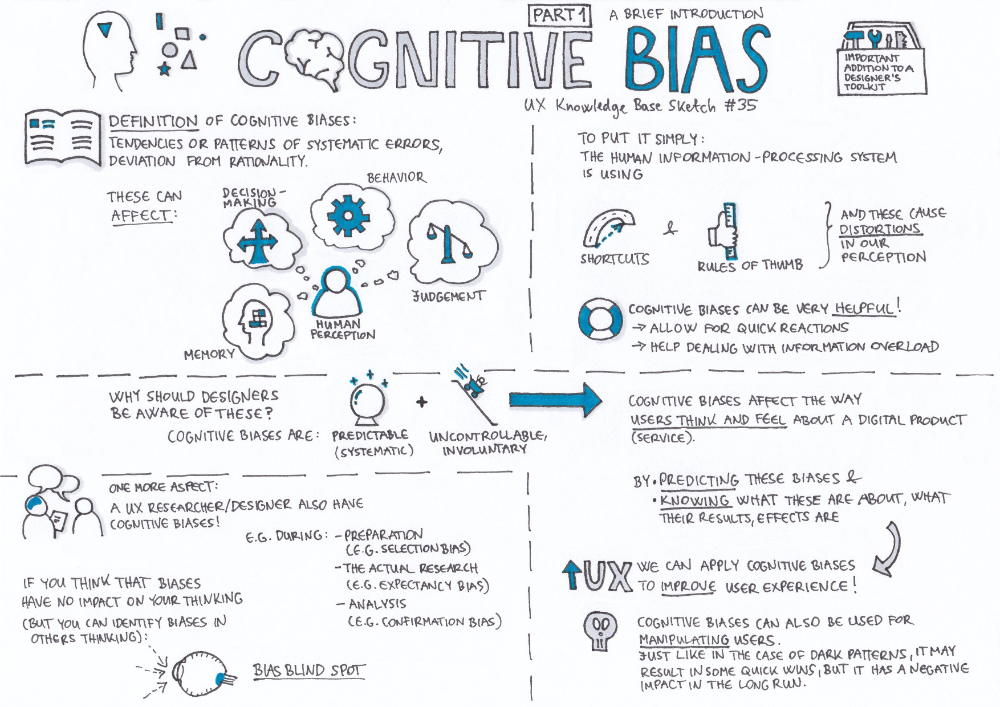
11 cognitive distortions that change the perception of the world - Odie. About design
Have you heard of the "aha" moment? It is the feeling of insight when, after much effort, you finally understand how something works or how to solve a problem. Ever wondered what causes this feeling? The answer is your brain. It is one of the most powerful tools at a person's disposal. But sometimes this powerful tool makes strange mistakes.
The brain is constantly evolving and creating a system of filters through which we see the world. These filters can leave holes in our perception of reality, causing us to look at things in a biased way. For example, programs about survivors of shark attacks make you think that sharks are very dangerous and should be feared. But in reality, vending machines and bee stings are much more likely to cause death! Even cows attack people more often than sharks.
Once you learn about cognitive distortions, you will see for yourself how they affect the way you think, make decisions, approach problems, and perceive the world.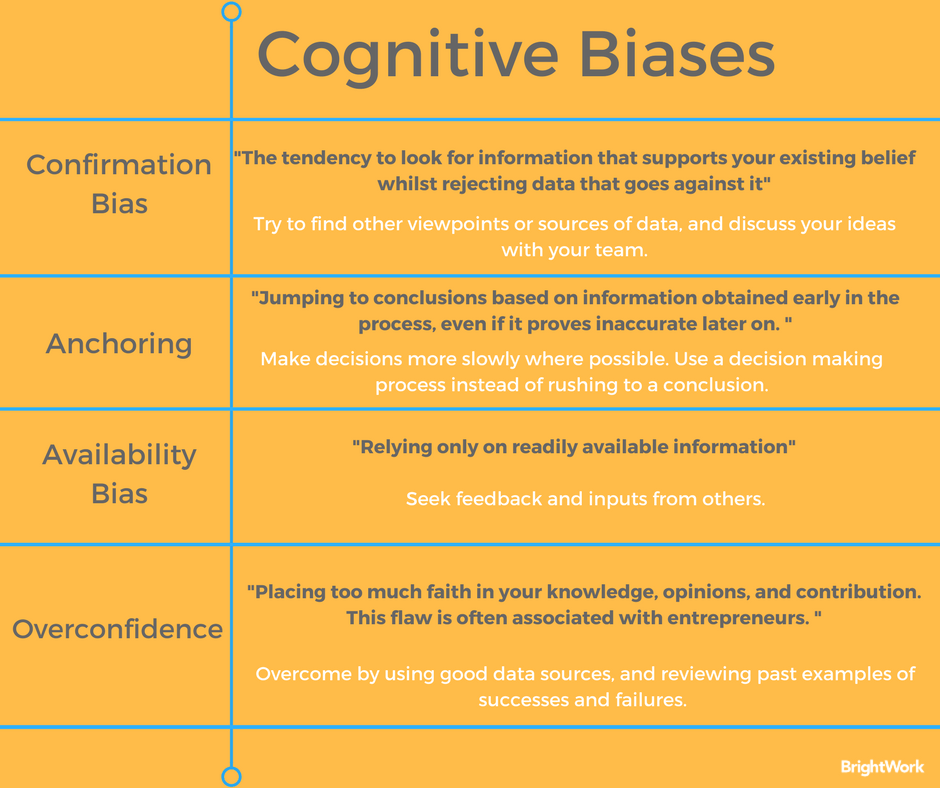 In this article, I will introduce you to eleven such distortions.
In this article, I will introduce you to eleven such distortions.
1. The availability heuristic
The availability heuristic explains why technology companies are so eager to personalize services. Netflix knows that we'll be much more excited to watch an episode of Paper House if we see it at the top of the recommendations list and get to the video in one click. The viewing experience will be worse if you have to search for the series in a long list or even get to it through the search.
Think Slow... Decide Fast, author Daniel Kahneman, Amos Tversky, and other researchers have proven that people tend to make decisions that are easier to implement.
2. The Affect Heuristic
The Affect Heuristic is a cognitive bias that causes people to make hasty judgments about a product or service based on initial experiences. It gives UX designers a free hand: Knowing this cognitive bias, they can focus on the look and feel of a site, putting content second.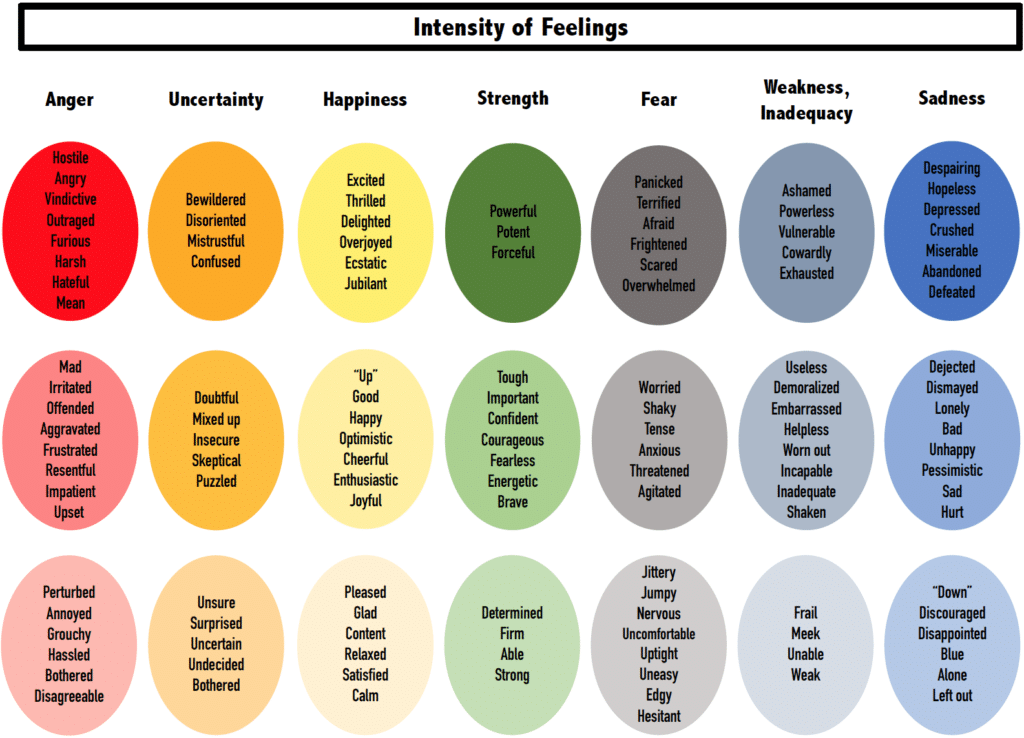
Imagine you've created an application that does something new, useful, and unique. The app is great, but people don't use it much - they just don't understand why it's worth taking the time to understand your development. Appearance will solve the problem: make a cool page design, and people will be drawn to the product themselves. On emotions, they will make a hasty judgment: if the design is cool, the application must also be cool. As a result, it is more likely that people will decide to figure out the application or simply launch it without even knowing what it does.
Gumroad's old design The new Gumroad design uses the heuristic of affect - the site looks intriguing and attractive3. The anchoring effect
The anchoring effect is one of the most common cognitive biases used by UX designers. It strongly influences the decisions of users. An example of anchoring is discount price tags. The product used to cost $100, but now it costs $60, and both numbers are visible on the label, just the first one is crossed out.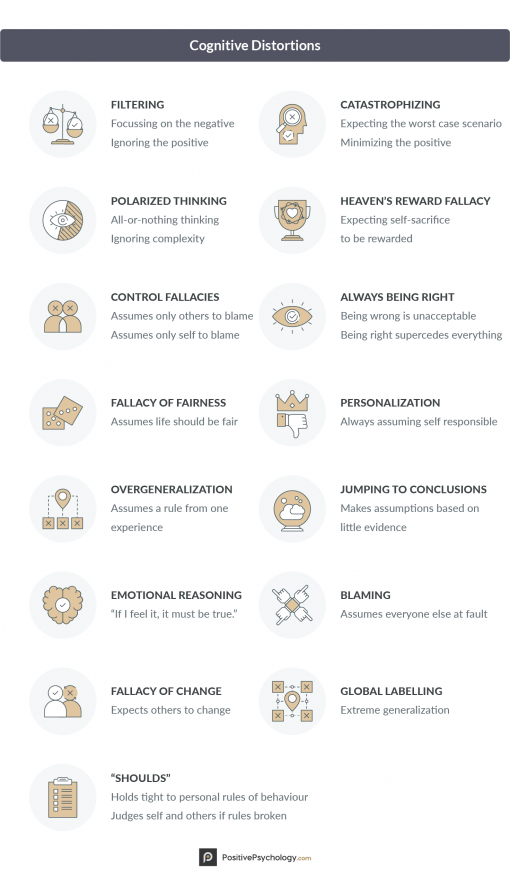 Because of the difference, it seems to the buyer that he snatched the product at a bargain price, although in another store such a product could cost even cheaper.
Because of the difference, it seems to the buyer that he snatched the product at a bargain price, although in another store such a product could cost even cheaper.
Note that anchoring forces the user to make the decision you want without any trickery. You are not lying, but simply presenting information in such a way that the offer seems profitable.
Audie's Note: We've already written about this effect, you can read more about it in the article: The Anchoring Principle in UX Design.
4. The Ownership Effect
In UX design, we can fall prey to the ownership effect by overvaluing our product or service. For example, do not remove a useless function from the application, simply because a lot of effort has been invested in its development.
To combat this cognitive bias, it is important to be clear about who our users are and what their needs are. To do this, you can develop personas and user journey maps to help keep the focus on design goals.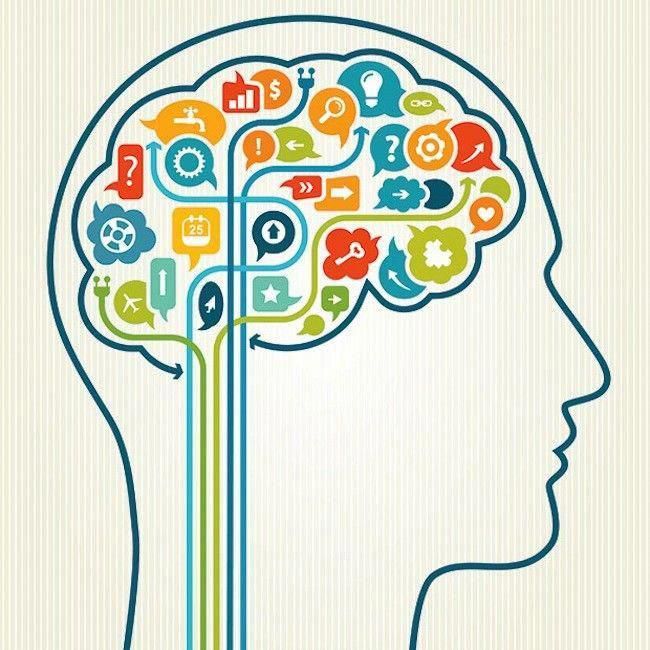 If a feature isn't working towards a goal, then it might be time to leave it.
If a feature isn't working towards a goal, then it might be time to leave it.
The possession effect has been demonstrated in various experiments, one of the most famous being conducted by Daniel Kahneman, Jack Knetch and Richard Thaler in 1990. The scientists gave a group of participants a mug or bar of Swiss chocolate and asked them to rate the value of the gift. Another group was also asked to estimate the value of the items, but the participants in this group were given nothing. The study showed that the owners valued the item twice as much as the non-owners.
Video about experiment and possession effect5. Aftercognition effect
Aftercognition effect (Hindsight fallacy) - the tendency to think that an event was more obvious or predictable than it really is.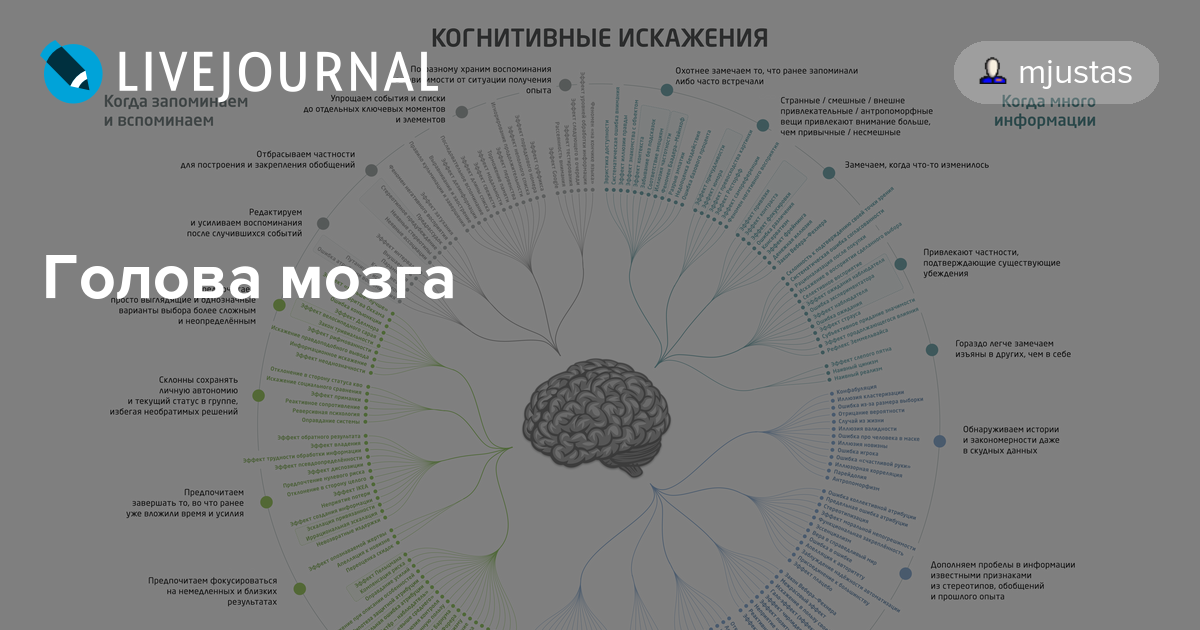
The aftercognition effect is very dangerous in UX design, because in UX design you need to constantly research and test solutions. And this effect makes us feel that we have already understood everything and know about our users. As a result, designers neglect testing where necessary—for example, they may approve the final design without bothering to test it with users.
For more on the aftercognition effect, see Nir and Far: Hindsight Bias: Why You Make Terrible Life Choices.
6. Sunk cost error
We are in the theater at a disgusting play. Intermission is announced, we really want to get up and leave, but money has already been paid for the ticket! Isn't leaving now a waste of money? With this in mind, we stay for the second act so that the investment is not wasted.
This cognitive distortion affects even the most intelligent people. We don't even notice it - we just stay at bad performances or store useless rubbish. Recall some of your useless thing and imagine that you are throwing it away.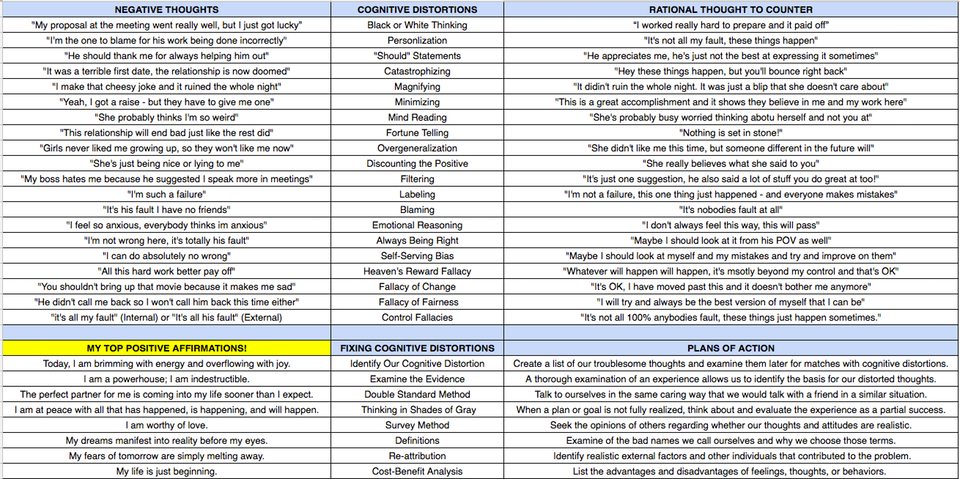 Do you feel internal dissatisfaction? Dissatisfaction arises because you do not want to lose the money invested in the thing.
Do you feel internal dissatisfaction? Dissatisfaction arises because you do not want to lose the money invested in the thing.
One of my friends said, “I paid for a streaming service, and it turned out that most of its applications are slow and do not show high-definition videos. But, although there are many other services, but I continue to use mine, because it's cheaper.
7. The halo effect
The halo effect is a cognitive distortion that makes it seem that if a person is good at one thing, then he is good at other things. For example, if someone is attractive, we may decide that they are also successful, smart, funny, and kind. We can even consider him a good worker, simply because he takes care of himself.
The halo effect was first described by psychologist Edward Thorndike in 1920. The scientist found that if, when evaluating subordinates, an officer gave a soldier a high score for "intelligence", then he automatically highly appreciated other characteristics - "soldier skills" and "leadership abilities", even if this was not true.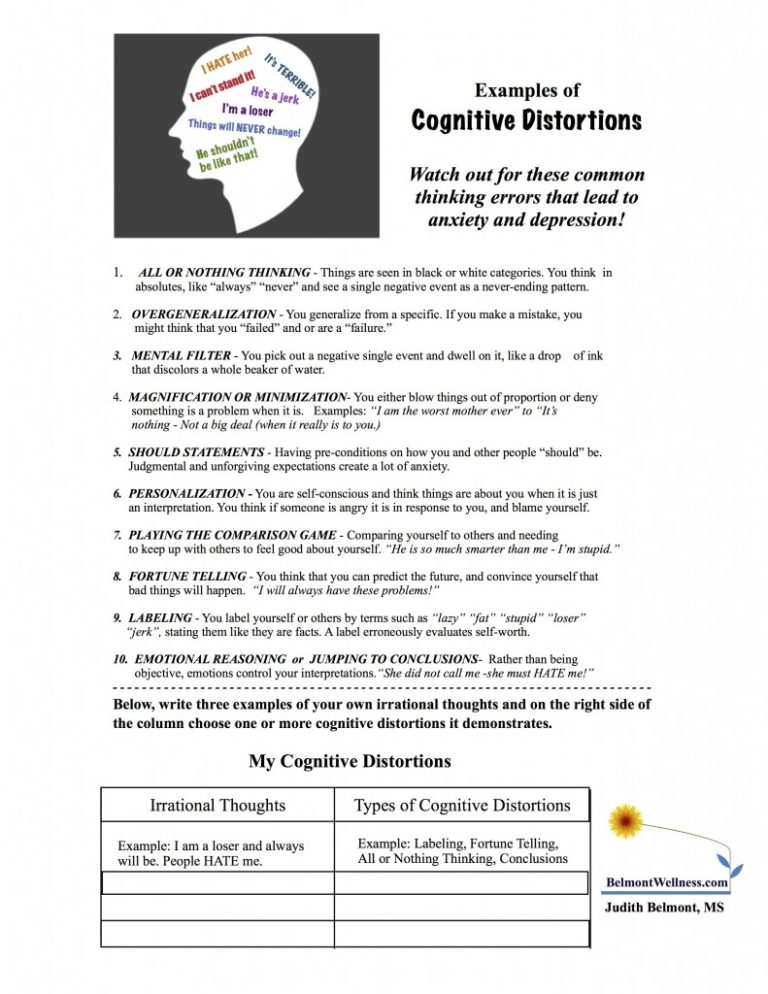
8. Social proof
Social proof is a cognitive bias that makes an action seem right to us if others do it too. Imagine: you enter a restaurant, and there are no customers inside. Dare to eat there? Most likely not, because you will think: if others do not go here, then there is a reason for this - maybe bad service or spoiled products.
If a customer cannot physically see or touch a product, they rely on other familiar things, such as ratings, to make decisions. That's why every product on Amazon has a star rating next to it: it demonstrates social proof.
Rating next to each product on Amazon9. Dunning-Kruger effect
The Dunning-Kruger effect prevents incompetent people from realizing how incompetent they are. These people don't even know how little they really know.
To avoid the Dunning-Kruger effect, you need to know your limitations. If something is not working for you, admit it and ask for help from a professional. Trying to do something on your own that you don’t understand is a waste of time and sometimes even harming yourself.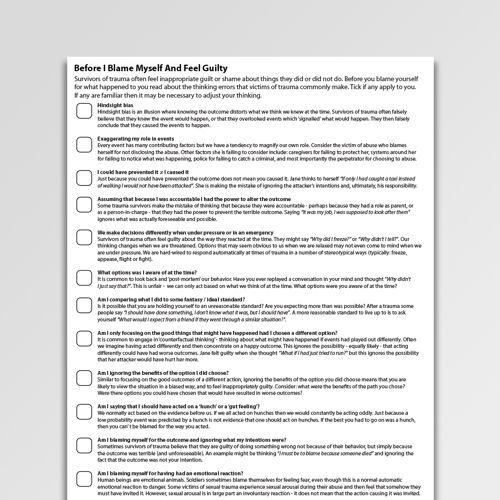 Before you take on something, you should ask yourself: “Am I really good at this?”. Better yet, ask another person to evaluate your abilities.
Before you take on something, you should ask yourself: “Am I really good at this?”. Better yet, ask another person to evaluate your abilities.
For more on the Dunnin-Kruger effect, see The Decision Lab: Why can we not perceive our own abilities?
10. IKEA effect
IKEA effect - the moment when we assemble furniture from parts sent by IKEA and feel that we participated in the creation of this thing. We made an effort and are proud of the result - therefore we value such a product more than pre-assembled. Emotionally, this furniture seems special, although in fact it is just one of thousands of samples sent from the warehouse.
Examples of the IKEA effect in UX design:
- Creating an avatar for your profile
- Adding a personal signature to emails
- Customizing the layout of your blog
11. Scarcity effect
Don't you hate limited discounts: “50% only today”, “discount lasts until the end of the month”? The salespeople are trying to make us feel like we're not moving fast enough and the bargain is about to slip away.